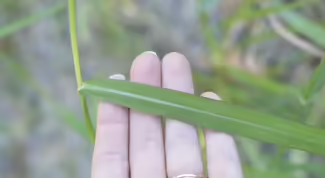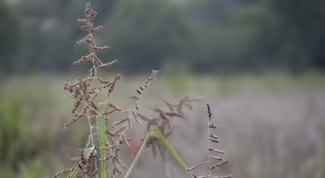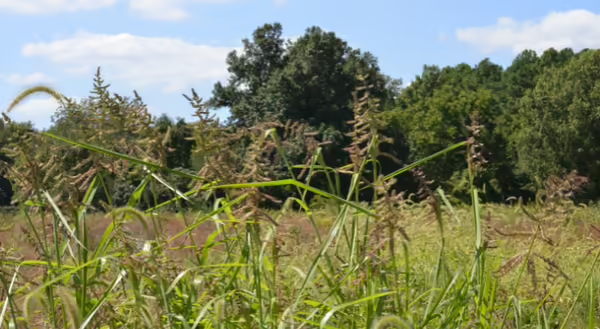
As someone who learned grass identification in Midwest prairies, I don’t often focus a lot of time on grasses that grow in the woods or wetlands. But today I wanted to highlight a grass found in wetter sites that serves as a great food source for ducks and other waterfowl. It’s an annual grass that grows in the summer and the seeds resemble millet.
Do you have a guess?
I’m talking about Barnyard Grass! There are multiple different grasses that have this common name, which can be a bit confusing. Let’s break it down.
Which Barnyard Grass is which?
There are 5 different species of Echinochloa in Illinois, 2 native and 3 non-native. Of the two native species, one is found in every county in Illinois, Echinochloa muricata. This is the Barnyard Grass that we’ll be looking at today, since it’s the most commonly found and planted one. It can also be referred to as Wild Millet. There are three different varieties of this species, which have small differences in the details of their spikelets and the presence or absence of awns, which we’ll look at closer in a bit.
The other most commonly found Barnyard Grass in Illinois is Echinochloa crus-galli, which is not native to Illinois. This one can be distinguished from E. muricata by looking at the rachis (or stem) of the inflorescence (or flowering cluster). In the native E. muricata, the rachis is smooth, while in the non-native E. crus-galli, the rachis has bristly hairs along it.
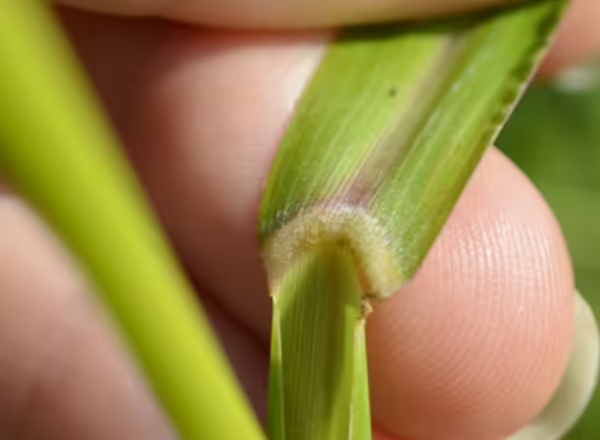
Identifying Barnyard Grass
Barnyard Grass, Echinochloa muricata, is a native, summer annual found in every county in Illinois, typically in disturbed habitats or wetter areas. This grass is often planted as a food source for waterfowl in wetland areas.
The leaves are broad and long with a midrib or central vein that looks silver, clear, or translucent in color, but can have a touch of pink at the base of the leaf blade. Usually we look for a ligule on grasses and see if it is membranous or hairy, but this is one of the grasses that doesn’t have a ligule! So at the base of the leaf blade where the blade becomes the sheath and wraps around the stem, you’ll just find a raised surface that is smooth, without a membrane or any hairs. This is one of the easiest ways to tell this grass apart from others, since most grasses have a ligule.
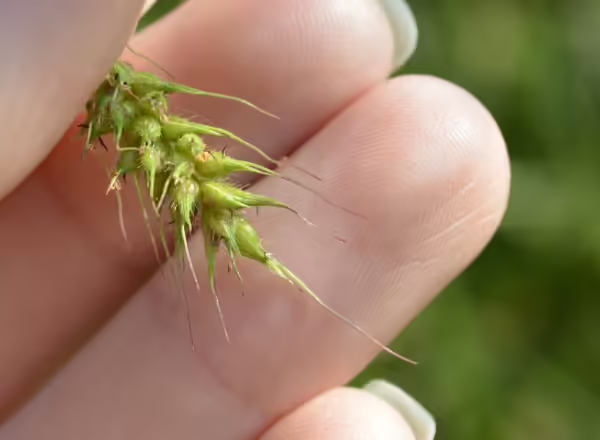
Barnyard Grass produces a panicle inflorescence, which means it has branches along it, giving it a pyramidal shape. I’d call this a loosely branched panicle, since the branches are spaced apart from one another, rather than packed together densely. The branches themselves are covered with densely packed spikelets, the flowering units of the grass. The spikelets can range from green to bright red in color, and they are pear-shaped and covered in soft hairs. One of the differences between the different varieties of this grass is the presence or absence of awns, those bristle-like structures that grow out of the tip of the spikelets. Some varieties are awned while others are awnless.
Want a closer look? Check out this one minute identification video!
Need a refresher on grass identification terms? Check out this blog post!
Thank you for reading!
Never miss a new post! Subscribe to our email list to get updates each time a new post is available.
Give us feedback! How helpful was this information (click one): Very helpful | Somewhat helpful | Not very helpful
ABOUT THE AUTHOR: Erin Garrett is a Natural Resources, Environment, and Energy Educator for University of Illinois Extension serving Alexander, Johnson, Massac, Pulaski, and Union counties. Erin develops and delivers high impact programming to adults and youth to help them develop an appreciation for natural resources and to empower them to make small changes to positively impact the environment. Erin’s programming focuses on why homeowners should consider choosing native plants, how to support native pollinators, how to identify grasses, how to identify and manage invasive species, and developing an appreciation for prairie ecosystems.
